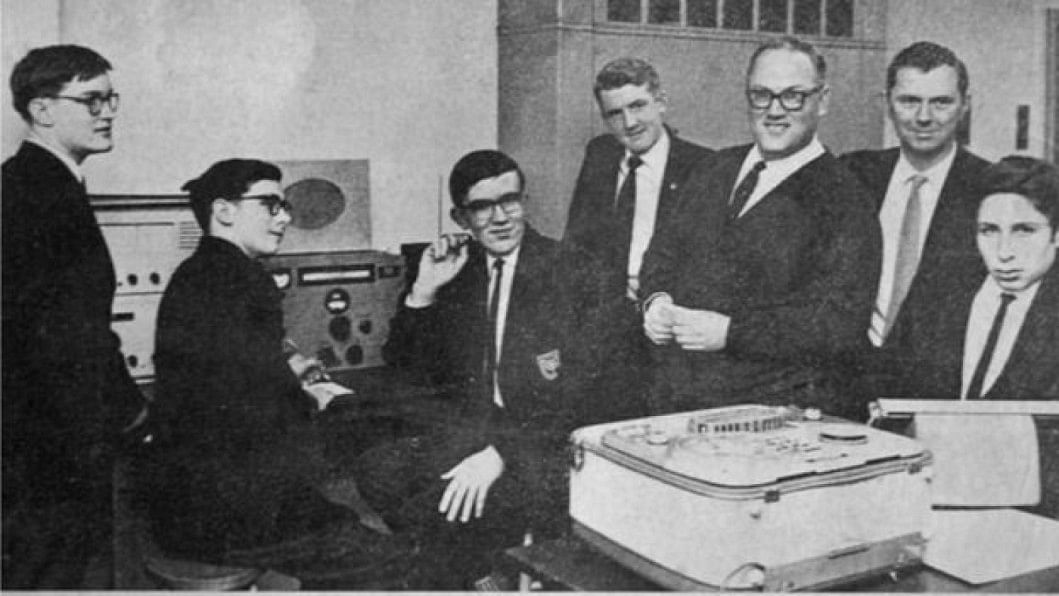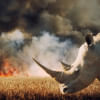Kettering Cosmos: How school children exposed Soviet secret

The Cuban Missile Crisis had pushed the world to the brink of nuclear Armageddon and no footprint had yet been left on the Moon. Yet one of the more peculiar twists of the Cold War involved a physics lesson at a provincial grammar school.
The Doppler effect is usually explained by the changing sound a police car siren makes as it approaches and passes the listener.
Back in 1966, a science teacher at Kettering Grammar School, in Northamptonshire, came up with another way of explaining this shift in wave frequency.
The teacher's name was Geoff Perry and he was fascinated by space satellites.
He wanted to use satellites to teach his pupils about the Doppler effect, one of his former pupils Michael Sinnett said.
"He wanted to demonstrate the frequency of the satellite as it came towards the school, as it went over the school and as it left and to show how it changed."
He needed specialist equipment to do this. Enter fellow teacher and radio enthusiast Derek Slater.
An ex-Army World War Two CR 100 receiver was purchased for about £25, a signal generator was borrowed and a length of wire was stretched out between two school buildings to act as an aerial.
The equipment was set up at the back of the physics classroom. Pupils were expected to come in before lessons and during lunch breaks to record the various readings.
"We then noticed one satellite was launched that had a slightly different signal."
Armed with information about the inclination of satellite paths in the relation to the equator, they plotted this mysterious body's orbit on an old globe with a length of wire.
What they established with certainty was that this satellite had not launched from the usual site at Baikonur, in Kazakhstan.
A second launch enabled them to zero in on the source of these new satellites.
They eventually discovered it was a new site - more than 2,000 miles (3,200km) away - in Plesetsk, Russia.
Perry told a specialist journal and the local newspaper about the discovery. Initially nobody seemed interested.
But on 18 April, 1966, a television crew was waiting in the science lab.
The teachers and the pupils were about to become international news.
"What started off as a simple physics experiment turned into a world event," said Sinnett.
This came when the West was on the back foot in the Space Race, says Dr Matt Grant, senior lecturer at the University of Essex.
"It was a very good story for the western powers," he says. "It made the idea that the Soviets had an ultra secret satellite programme look ludicrous.
"And this was a time when the Soviets were much in the lead on this sort of technology, there was a lot of anxiety in America where the Moon programme was all about catching up.
"And you have to remember these satellites at the time were a hyper advanced technology. This would have been met with glee in America."
The existence of the Plesetsk site was not admitted by the USSR for a further 17 years.
It was reported at the time that the schoolboys had "beat the Americans" in discovering the site. Bob Christy, another pupil who participated in the experiment, thinks they probably knew of its existence, but the school's work made sure the information was made public.
"It wasn't about studying the Russian space programme, it was about helping children understand space," he said.
Kettering Grammar School has since closed and both teachers have died. However, the group they inspired - the Kettering Cosmos - ran for nearly 40 years and continued to make discoveries.
However, that spirit of space adventure is far from dead and English school children are still making international headlines.
Take, for example, the children of Morecambe Bay Primary School.
For the culmination of a space project, pupils sent a toy dog called Sam up 15 miles (24km) into inner space.
The footage they got back from a camera mounted to Sam was breathtaking.
"The children's reaction was to comment on how curved the earth was," said head teacher Siobhan Collingwood. "It was awe and wonder and the children could not believe that the little Sam they had held in their hands was now in the upper atmosphere."
That awe in their own achievement - Collingwood referred to it as "deep learning" - is a link that joins the children of Morecambe Bay Primary and the Kettering group.
"These are things they will never forget and they are things you simply cannot test in an exam," she said. "It is real education."
Sam sadly did not return to earth with the equipment.
He is thought to be lost somewhere within a 50 mile (80km) radius in the Burnley area.
What started as a science project has now become lesson in geography.

 For all latest news, follow The Daily Star's Google News channel.
For all latest news, follow The Daily Star's Google News channel. 








Comments